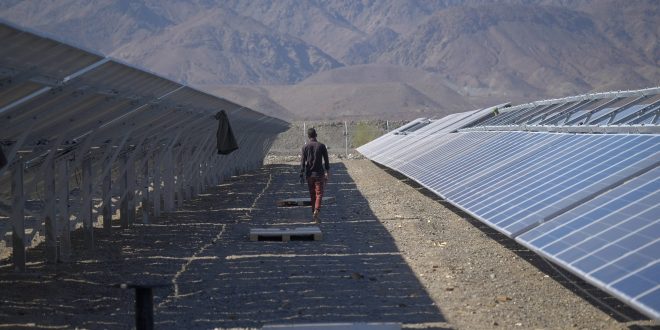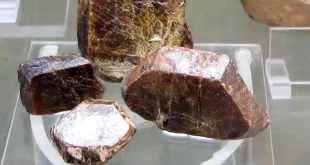Iran has realized the value of its vast renewable energy potential—but serious international and institutional obstacles threaten to derail Tehran’s green energy plans before they gain momentum.
Although Iran is one of the world’s largest producers of fossil fuels, the Islamic Republic has increasingly focused on renewable energy to address its growing domestic energy shortfall and environmental challenges. Recent years have seen a significant shift in Iran’s energy strategy and major investments in green energy projects, driven by the country’s need to diversify its sources of revenue, circumvent economic sanctions, and address concerns over the country’s environmental record. Despite these ambitious efforts, Iran continues to face considerable obstacles to a clean energy future, including budgetary constraints, technological gaps, and geopolitical tensions that will hinder international cooperation and investment in Iran’s economy. Nevertheless, Iran has worked to expand its renewable energy sector, particularly solar and wind resources, to secure its domestic needs, long-term energy supply, and mitigate the negative effects of climate change.
Iran has set ambitious targets to enhance its renewable energy capacity. aiming to reach 20 GW of total renewable capacity by 2027 and add 10 GW of solar capacity by 2030. By 2031, policymakers have set the goal of 50 GW of renewable energy. Iran’s leaders have announced an aim of generating 10 percent of the country’s electricity from renewable sources by the end of 2025, and 30 percent by 2030. Iran’s current renewable energy capacity stand at over 4 GW, roughly half of its goal; of this number, 1 GW comes from solar and wind power, with significant room for growth
Government Initiatives and Investments
The Iranian government has promoted the growth of renewable energy through various financial incentives, laws, and regulations. In an effort to promote renewables, it has exempted renewable power plant equipment from customs duties and added a national electricity tax to fund renewable energy projects. Additionally, the government plans to invest $5 billion from the National Development Fund into renewable energy projects, hoping to generate 10 GW of renewable electricity within the next two years.
Iran’s renewable energy efforts could help to significantly reduce its ongoing energy crisis by reducing the country’s dependence on fossil fuels. By harnessing Iran’s abundant solar and wind resources, the country can enhance its energy security, minimize environmental degradation, and create a more sustainable energy model. These efforts would also ease the pressure on traditional energy systems that leave the country’s consumers beholden to the price of fossil fuels.
To this end, the government is making strategic investments in key areas to drive innovation and spur investment. Tehran aims to secure $35 billion in investments to achieve its renewable energy targets. This plan involves forming joint ventures with neighboring countries and sharing information to support projects that cross national borders. The effective integration of renewable sources into the Iranian energy grid will also require investment in energy storage technologies, to ensure that energy collected from weather-based sources can be accessed round the clock. Iran has 300 sunny days a year and the north of the country is mountainous, which should motivate policymakers in Tehran to concentrate on wind and solar energy as viable renewable energy resources. Indeed, the government has already moved to subsidize new, large-scale wind and solar farms in prime locations to ensure they remain profitable.
The government has taken these steps to address Iran’s annual energy imbalance. Electricity consumption is highest during the summer, when energy-intensive air conditioning strains the grid. In the winter, natural gas is used in heating, constricting the supply available for power plants and exacerbating shortages. To solve its chronic 14 GW power shortfall during peak demand periods, Iranian leaders have passed laws that attract international investment, provide tax breaks for favored industries, and establish feed-in tariffs that pay individuals and companies for providing electricity to the grid via the Iranian Renewable Energy Organization (SUNA).
This imbalance is compounded by the country’s heavy reliance on fossil fuels, inefficient extraction practices (such as “flaring” gas produced by oil wells, rather than capturing it), electricity subsidies that enable high consumption rates, and insufficient investment in energy infrastructure. These factors underline the urgent need for a sustainable and diversified energy strategy to ensure a reliable supply of electricity that serves Iranian consumers year-round.
Renewable energy, especially solar power, presents a viable solution to Iran’s energy challenges. By capitalizing on its substantial solar resources, Iran’s energy problems have a workable answer in renewable energy, particularly solar electricity. Iran has a big edge here because many of its regions get up to 300 sunshine days a year. Because of this, the nation is well-suited to use solar energy efficiently, much like other sun-loving Middle Eastern nations like Saudi Arabia and the United Arab Emirates.
Iran can address its current energy shortage and strengthen its energy infrastructure. That is not to say that the Islamic Republic will neglect traditional energy sources. Alongside its investment in green technologies and infrastructure Iran plans to increase its daily gas output by 55 percent over the next five years, with an output goal of over 1.2 billion cubic meters per day. These measures signal that policymakers in Tehran seek to strike a balance between improving existing extraction methods and developing the renewable energy sources that will serve the country in the long term.
Sanctions Bite
The most significant obstacle to the growth of renewable energy in Iran is the international sanctions regime, which has significantly impeded the country’s economic development by limiting foreign investment and technology transfer. These restrictions have hindered Tehran’s access to global financial markets, forcing the Iranian government to rely on stretched national budgets. Sanctions have also made it more difficult for Tehran to acquire loans for renewable projects, export any excess renewable energy it produces, and modernize its energy infrastructure.
Despite these challenges, Iran has made some progress. The country has fostered its domestic renewable energy industry, investing in local manufacturing, and implementing homegrown financial incentives to overcome sanctions-related obstacles. However, prolonged sanctions may continue to hinder its efforts to reduce carbon emissions, adopt sustainable technologies, and improve energy efficiency. Policymakers should carefully consider the impact of sanctions and explore strategies that balance diplomatic objectives with the need for effective and environmentally friendly energy solutions.
Iran has made some headway in developing its own renewable energy sector in spite of these obstacles. The nation has started major solar and wind power projects like the 100 MW Kerman Solar Plant and the Manjil Wind Farm, implemented government incentives like feed-in tariffs, and formed organizations like SATBA to encourage renewable energy. Furthermore, research institutes and universities in Iran are advancing renewable energy technology.
The Pezeshkian Presidency
Iranian President Masoud Pezeshkian, who won election to Iran’s highest office in early July, took office at a pivotal moment for Iran’s energy industry and its renewable energy goals. Pezeshkian’s stewardship of Iran’s green energy strategy will be essential to achieving its overarching strategic objective of year-round energy security. Although it has plans to increase its total clean energy generation to 30 GW by 2030, Iran’s current renewable energy capacity is nowhere near this mark. Although Iran’s near-term potential for green energy production has been estimated at 42 GW, the country only produced 8 GW of renewable power in 2020.
Iran is thought to have 42 gigawatts (GW) of potential for producing renewable energy, however as of 2020, the nation had only produced 8 GW. This disparity emphasizes the difficulties Iran has in using its plenty of renewable energy sources, such wind and solar power. Iran’s renewable energy capacity as of April 2024 was 1.186 GW, with solar power plants accounting for 58% of the capacity and wind farms for 31%.
To increase renewable energy output and create jobs, the new administration intends to build 78 power plants and 1,000 generators. Pezeshkian is expected to concentrate on enhancing diplomatic ties with the West, which could result in the relaxation of sanctions on foreign investment. However, in order to meet the targets of a 10 percent renewable mix by 2025 and 30 percent by 2030, green energy will need to overcome a number of challenges. Renewable producers will have to combat entrenched subsidies for fossil fuels, sanctions that restrict access to cutting-edge technologies, and a lack of infrastructure that will inevitably prevent widespread integration of renewable energy. More public awareness and governmental support will be needed for renewable energy technologies to progress and become competitive. Public awareness of the advantages of green energy may spur demand, support for legislation that is beneficial to the situation, and neighborhood projects that will eventually help Iran’s output of renewable energy to grow.
In the short term, Iran’s limited use of renewable energy sources has also prompted the country to seek natural gas imports from Russia to address its shortages and mitigate the ongoing energy crisis. On July 17, Oil Minister Javad Owji announced an agreement that will see Iran import 300 million cubic meters of natural gas per day from Russia. This move comes despite the fact that Iran possesses the world’s second-largest natural gas reserves—a stark reflection of the country’s failure to realize its own hydrocarbon extraction potential. The Islamic Republic’s reliance on Russian gas also serves to demonstrate the importance of renewable energy resources to localize energy supplies away from a diplomatically isolated Russia and address imbalanced domestic demand cycles.
To advance its renewable energy sector, Iran must address all of these challenges. Lifting international restrictions could enhance Iran’s ability to attract foreign investment and acquire the technology needed to expand the country’s renewable energy sector. Further vital actions include updating Iran’s outdated infrastructure and putting policies in place that encourage the generation of renewable energy, including the previously stated feed-in tariffs. With the skillful navigation of major financial and diplomatic obstacles, Iran’s renewable energy projects could significantly ease the country’s energy crisis and contribute to a more sustainable energy future.





